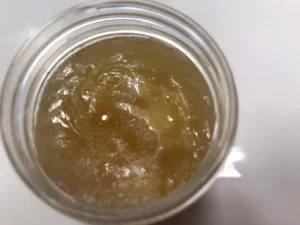What is Polyethylene Wax
Polyethylene wax, often abbreviated as PE wax, is a synthetic wax known for its unique properties. This versatile material is derived from ethylene, a basic building block of plastic. PE wax has been used by polyethylene wax manufacturers as a lubricant and processing aid in various industries. The material is non-toxic; therefore, it is widely used both for manufacturing and improving the performance of end products.
Properties of Polyethylene Wax
- Chemical Resistance: PE wax exhibits excellent resistance to chemicals, making it a durable choice in harsh environments.
- Low Viscosity: It flows easily, thanks to its low viscosity, enhancing processability in numerous applications.
- High Melting Point: The high melting point of PE wax makes it stable under thermal stress.
- Compatibility: Its compatibility with other waxes and polymers broadens its usability.
- Lubricating Properties: PE wax acts as a superb lubricant, reducing friction in various processes.
Production Process
The production of polyethylene wax involves a specific process. The polyethylene wax manufacturing process includes polymerization of ethylene, followed by meticulous refining to achieve the desired molecular weight and properties. This process is crucial for producing high-quality PE wax that meets industry standards.
Identifying PE Wax
There are two primary types of PE wax: low-density and high-density. To see the comparison between these two types, you can check below:
Low Density Polyethylene Wax (LDPE Wax)
Characteristics and Properties:
- Flexibility: Low molecular polyethylene wax is known for its high flexibility, making it a preferred choice in applications where pliability is essential.
- Lower Melting Point: It has a relatively lower melting point compared to its high-density counterpart, which translates to ease of application in various processes.
- Translucency: This type of wax often has a translucent appearance, indicative of its lower density.
- Applications: Given its properties, low density polyethylene wax is commonly used in adhesives, inks, and coatings where flexibility and ease of application are crucial.
High Density Polyethylene Wax (HDPE Wax)
Characteristics and Properties:
- Rigidity and Strength: HDPE wax exhibits higher rigidity and strength, attributes that are desirable in more demanding industrial applications.
- Higher Melting Point: It has a higher melting point, making it suitable for applications where thermal stability is key.
- Opacity: Typically, HDPE wax is more opaque than LDPE wax, reflecting its higher density.
- Applications: This type of wax is extensively used in plastics, particularly in enhancing the properties of various polymers, and in applications requiring higher heat resistance and durability.
Applications of Polyethylene Wax in Different Industries
Polyethylene wax finds its use in various sectors. These industries can shortly be listed as follows:
- Plastics
- Coating and painting
- Ink industry
- Cosmetics and personal care
- Adhesives
- Rubber
- Textile
- Candle making
- Food packaging
Differences Between PE Wax and Paraffin Wax
While PE wax and paraffin wax may seem similar, they have distinct differences in their chemical composition and properties. This section highlights these differences, helping you understand why polyethylene wax is often the preferred choice in many applications.
Download Properties
Download Properties
Download Properties
Download Properties


